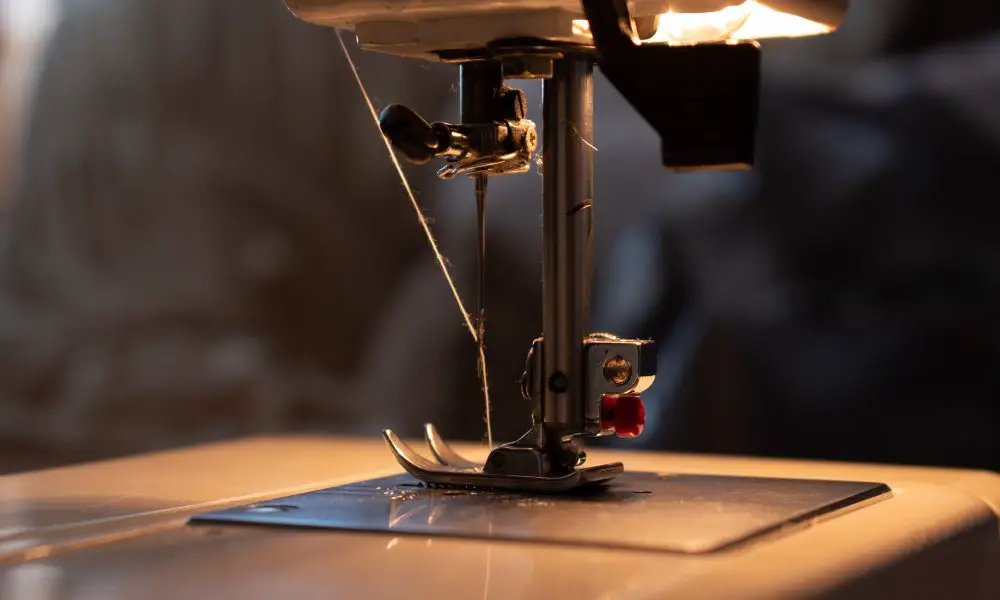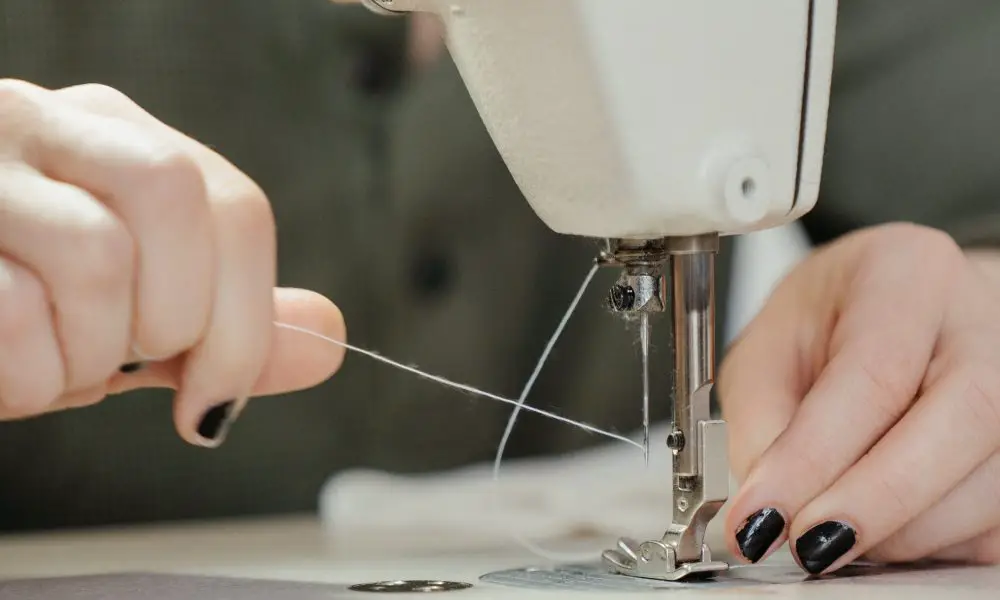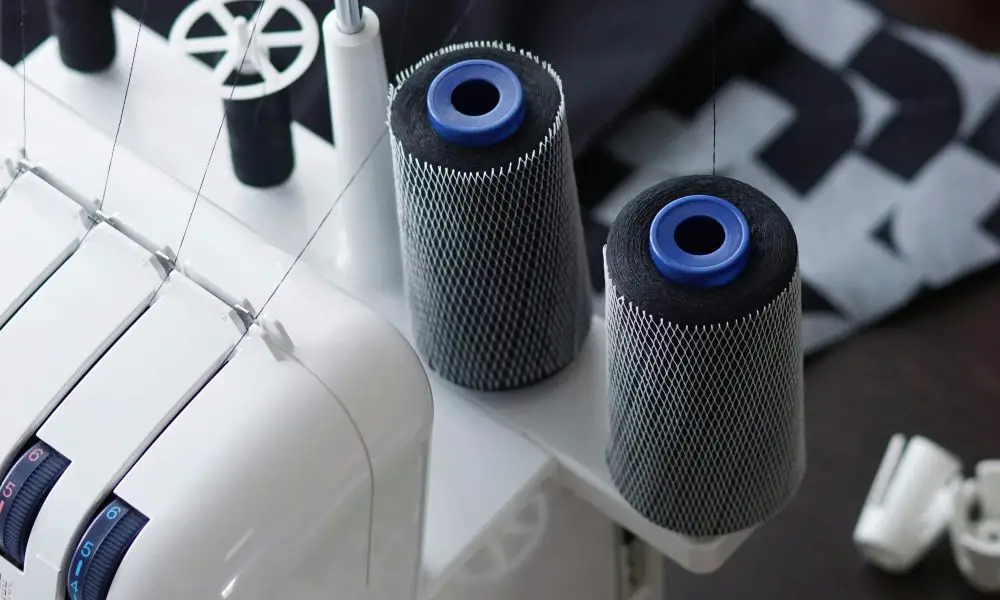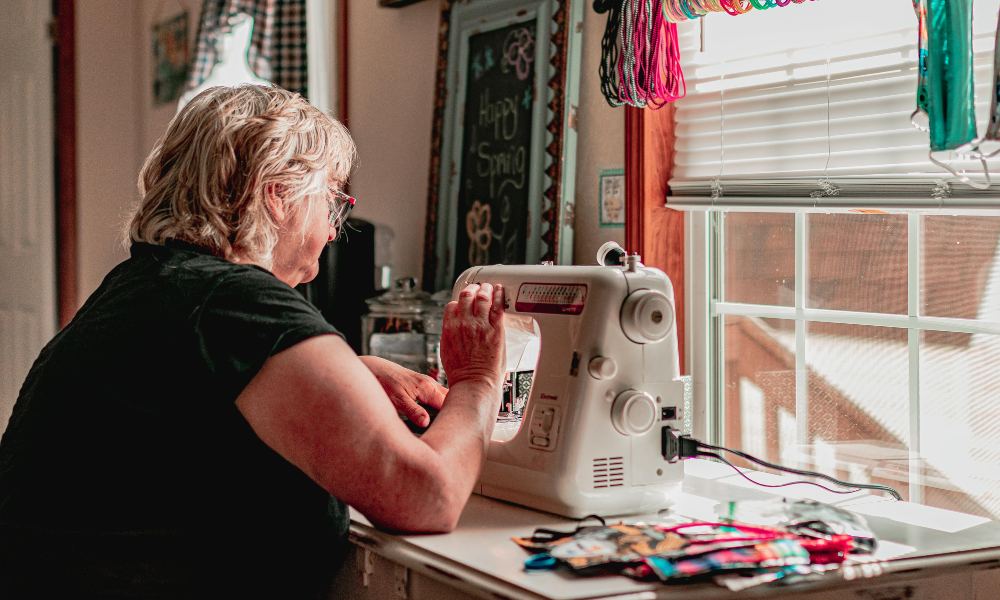Have you ever been happily sewing along only to have your thread suddenly snap? Few things are more frustrating than working on a project to have it interrupted by pesky thread breaks. If your sewing machine thread seems to break constantly, no matter what you try, don’t despair. With some detective work and machine maintenance, you can get to the bottom of the issue.
Thread breaks typically stem from just a handful of common causes. Pinpointing the specific problem is the first step to stopping those annoying thread breaks in their tracks. Let’s walk through the usual suspects behind continuous thread breakage.
Improper Thread Tension Can Lead to Frequent Breaks
One of the top culprits behind broke thread is incorrect thread tension on your machine. The thread tension controls how tight the top thread and bobbin thread are pulled as you sew. This tension is crucial because it’s what interlocks the threads to form a stitch.
Excessive tightness of the tension causes strain on the thread as it goes through the machine. Picture the thread being pulled drum-tight – eventually, something’s gotta give! On the flip side, tension that’s too loose can also cause issues. The thread needs a certain degree of tautness to form a nice locked stitch. Without it, the threads can unravel and pop.
Both over-tightened and under-tightened tension can lead to skipped stitches, puckered seams, and yes – lots of breaks. Take time to set the tension just right. Make test samples on scrap fabric to dial in the optimal tension settings before starting on your actual project. Getting it adjusted properly upfront will save you headache down the road.
Low Quality Thread is Prone to Frequent Breaking
The quality of thread you use also matters when it comes to breakage issues. Cheap or low quality thread that’s old, weakened, or made of inferior materials is going to be more likely to break as you sew.
Think twice before grabbing those bargain bins of dusty, mystery threads. Same goes for pulling out great grandma’s thread stash from the 1950s that’s been languishing in the attic. Older threads can become dried out and brittle over time. Investing in high quality thread from reputable brands is worth it to avoid aggravation later.
Make sure you are also matching the weight and fiber content of the thread to the needle and fabric you are using. All-purpose thread may work fine for light wovens, but trying to use it on heavy canvas could spell trouble. Heavier threads stand up better to dense, hard to penetrate fabrics.
Pairing the Wrong Needle and Fabric Can Cause Problems

Another common cause of thread breaks stems from having the wrong type or size of needle for the fabric you are sewing. The needle you choose needs to be suited for the fabric’s weight and fiber content. An incorrectly sized needle can lead to skipped stitches, fraying, and yes – lots of frustrating thread breaks.
A too small needle won’t make a large enough hole in the fabric for the thread to pass through smoothly. This puts extra strain on the thread as the needle attempts to penetrate the fabric. Meanwhile, a too large needle hole can allow the thread to slip down into the fabric instead of catching properly to form a stitch.
In addition to proper sizing, the needle type matters too. Using the wrong point style or shape can shred delicate fabrics or lead to skipped stitches. Be sure to select needles tailored to your project – metallics for heavyweight materials, stretch for knits, that sort of thing. Taking the time to match the needles to your fabrics makes a big difference.
Damaged Needles Should Be Replaced ASAP
While we are on the topic of needles, it’s crucial to examine them closely as a potential source of thread breaks. Even the highest quality needles eventually need to be replaced. After hours of stitching, needles can bend, dull, or develop burrs along the shaft.
These types of needle damage add friction and weaken the thread as it passes through the needle eye. Damaged needles essentially saw away at the thread little by little with each pass until it finally snaps. Pay close attention to needles on frequently used machines. Replace at the first sign of wear and avoid unnecessary thread breaks.
Lint and Debris Can Cause Abrasion
Here’s another common but frequently overlooked cause of thread wear and breakage – lint and debris buildup. As you sew, tiny bits of fabric and fibers accumulate around the needle plate, bobbin case and other internal components. Over time, all this fuzz and debris creates an abrasion that literally saws away at the delicate thread.
Thoroughly cleaning lint and dust bunnies away from the sewing machine’s moving parts is so important. Use a small brush to remove lint from hard-to-reach areas along the thread path. Check for debris down inside the bobbin case and racing as well. Removing this buildup goes a long way towards preventing unnecessary thread damage.
Check for Bobbin Issues Leading to Breakage
Problems with the bobbin itself can also lead to frustrating thread breaks. Check that your bobbins are wound smoothly and evenly. Uneven winding causes thread to catch and tangle. Also confirm that your bobbins are the correct type and size for the machine, and that they are inserted properly in the bobbin case.
The bobbin case and tension need periodic adjustment too. Try replacing the bobbin with a fresh one if you continue to have issues. Keep sewing trouble-free by monitoring your bobbins closely. Well wound, smooth bobbins prevent headaches down the road.
Inspect for Damage to Machine Parts
Last but not least, take time to carefully examine your sewing machine for any damage along the thread pathways. Extended use over time can cause small nicks, burrs, and rough spots to develop on machine parts – especially on frequently replaced components like the needle plate.
These rough areas act like little razor blades against the thread. They can fray and weaken the thread, causing breaks. Take the time to inspect internal components and replace any that show visible damage. Something as simple as installing a new needle plate can often solve persistent thread break issues.
Frequently Asked Questions
Why does my top thread keep breaking?
This is usually caused by incorrect top thread tension. Make sure the tension isn’t too tight or too loose. Improper threading can also lead to top thread breaks.
Why does my bobbin thread keep breaking?
Check for problems with the bobbin case, bobbin tension, or bobbin winding. Lint buildup, damage, and improper insertion can cause bobbin thread breaks.
How can I prevent thread breaks while sewing?
Use quality thread matched to your fabric and needles. Make sure tension is balanced. Replace damaged needles. Clean lint and debris. Inspect for damage and replace parts as needed.
What tension should I set my sewing machine to?
There is no universal tension setting. Do test stitches on scrap fabric to dial in the right tension for each project. Tension varies by machine, thread, fabric, etc.
Why does my thread break only when sewing thick fabric?
Thicker fabrics require a larger needle to penetrate smoothly. Use a heavier thread matched to the thicker needle. Adjust tension to suit the fabric thickness.
Ready to Stop those Annoying Thread Breaks?
As you can see, thread breaks usually stem from just a handful of common causes like incorrect tension, low-quality thread, lint buildup, and damage. Now that you know what typically leads to breakage, you can start troubleshooting your own machine.
Check that first line of defense – your thread tension. Ensure the top and bobbin tension are perfectly balanced for your project’s fabric. Invest in quality needles and thread designed for the materials you are sewing. Check for damage and debris and replace parts as needed. Keep your machine in tip-top shape, and you’ll be sewing with fewer disruptions in no time!
What about you? Do you have any tricks for dealing with pesky thread breaks while sewing? Share your machine maintenance tips and tricks in the comments below!
***
Main image: pexels.com




